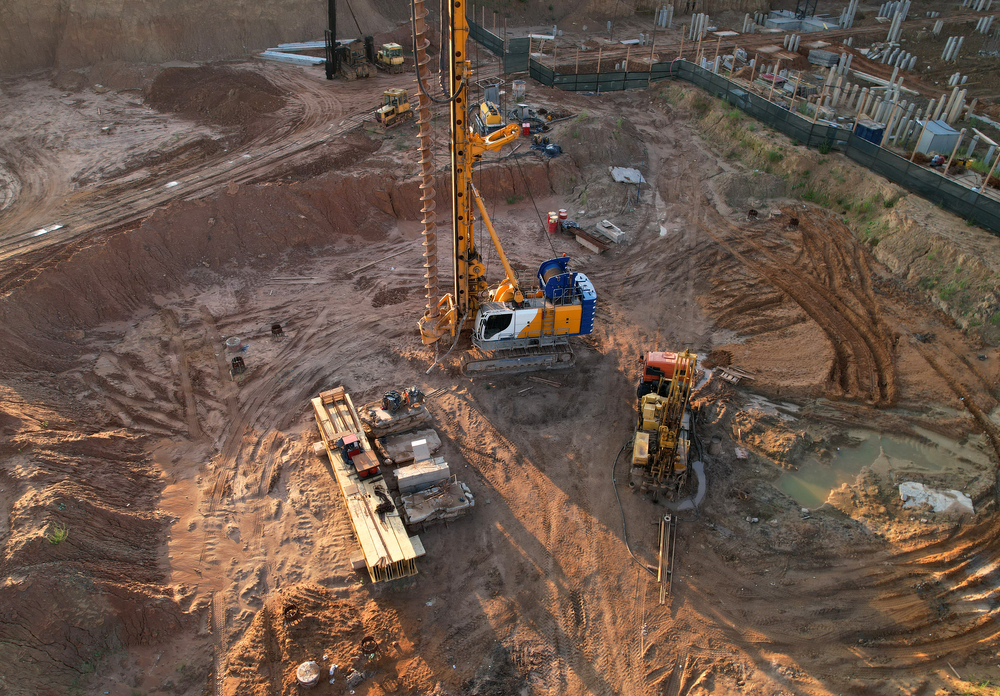The 10-Second Trick For Geotheta
The 10-Second Trick For Geotheta
Blog Article
The Main Principles Of Geotheta
Table of ContentsAll About GeothetaThe smart Trick of Geotheta That Nobody is Talking AboutThe 7-Minute Rule for GeothetaSome Known Questions About Geotheta.
They team up with civil designers, architectural designers, designers, and various other experts to integrate geotechnical considerations right into the general job design and building procedure. This needs efficient team effort, control, and communication to guarantee that the geotechnical facets align with the job purposes and fulfill governing needs.Mining & Materials Design: Concepts of drilling, penetration prices, and factors impacting the option of drilling approach. Features of explosives, shooting systems and blast patterns. Blasting methods in surface and below ground functions. Unique blasting strategies at excavation borders. Resonance and sound control. Mechanical and continuous approaches to fragmentation, consisting of longwall shearing and fullface boring.
Modelling of fragment and bit size circulations; comminution as a transfer feature. Comminution innovation: squashing, grinding, dimension classification. Integrated evaluation of fragmentation and comminution operations. Used by: Mining & Products Design.
5 Easy Facts About Geotheta Described
Bachelor's level programs in civil, geotechnical, geological, and ecological engineering commonly last four years and include basic education and learning training courses in English, social scientific research, and the humanities, as well as programs in sophisticated maths, architectural geology, and liquid mineralogy. (https://www.brownbook.net/business/52934980/geotheta/)
Geotechnical design entails the assessment of the soil and rock problems at a certain site, and their ramifications for the growth of that website. As most structures depend on the ground for assistance, it lacks surprise that an in-depth understanding of the ground problems, and the viability of foundation systems, are vital to the long-lasting security and efficiency of the structure or framework.
Specialising in the investigation of geological developments and ground behavior, geotechnical designers execute clinical examinations and testing to understand the effect these geological formations may carry the style and building and construction of structure, civil and infrastructure projects. This experience is essential for the style and building and construction of structures, roadways, passages, dams, bridges, and water supply and sewer systems.
The geotechnical team at Douglas Allies routinely speak with architects, design engineers, developers, and contractors to make suggestions on design and development proposals to make certain that the constructed frameworks are appropriately developed for the ground conditions. For instance, the style of footing systems needs to consider the weight of the framework, the capacity of the ground to support that weight together with movement tolerances and effective building and construction.
Geotheta Can Be Fun For Everyone
This job is substantially streamlined by the use of our Douglas Map geospatial platform which makes this details conveniently easily accessible in an easy to make use of web internet browser interface. A click here for info geotechnical designer will certainly direct the exploration of boreholes and test pits to accumulate soil and various other examples, and also analyze surface features and ground exposures to create a geotechnical model of the subsurface conditions.
Depending upon the task type and ground conditions encountered, lab screening may to name a few points evaluate toughness, compressibility, reactivity and/or permeability of dirt and rock examples. After this data is accumulated and collected, the outcomes are made use of for a geotechnical design of the site, which is usually offered as areas throughout the website.

A geotechnical investigation naturally can just analyze the ground conditions at the locations drilled or excavated. All-natural variants in soil and rock problems can take place throughout a site and between examination places. It is consequently good practice that the geotechnical engineer be kept throughout building and construction of the project to provide on-site verification that the ground conditions come across follow the assumptions and advice provided in the geotechnical investigation report.
Top Guidelines Of Geotheta
Geotechnical designers use their extensive knowledge of dirt and rock to examine danger and resolve troubles on varied facilities projectsGeotechnical engineering is a specialist branch of civil design which considers the practices of earth products and the application of dirt and rock auto mechanics. Tailings Engineer. As a geotechnical engineer, you will analyze the physical, mechanical and chemical properties of dirt and rock in order to create foundations, preserving structures and earthworks
Geotechnical design is closely connected to and overlaps with, both engineering geology and ground design - https://dc-state.cataloxy.us/firms/dc-anacostia/geotheta.com.htm. It's possible to be experts in geotechnics or help a geotechnical firm however be referred to as an engineering rock hound or a ground designer. As a geotechnical designer, you'll need to: build and preserve connections with customers and various other professionals associated with the website, throughout each projectmaintain security criteria on website bear in mind cost effects when you make recommendationsstudy geological maps and aerial photos from a variety of resources and from different time periodsexamine building plans to see just how practical they are based on your understanding of the siteinvestigate threats or geological dangers for the sitesearch for environmentally delicate functions, such as landfill beginning to develop valid and interpretive ground modelsplan area investigationsdrill and analyse examples of bedrock, soil, groundwater and additional materials supervise other professionals on sitesolve technological issues as they develop, such as unforeseen frameworks at drill sitesmonitor conditions during and after building and construction to see to it structures are stable in the brief and long termadding information gathered on website to your preliminary researchcreating geotechnical calculations, illustrations, and 2 or three-dimensional computer system designs interpreting the datamaking referrals regarding the suggested use the site

Report this page